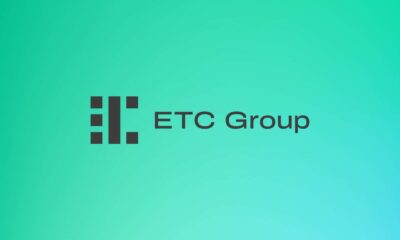Börsen har varit en uppsjö av motsägelser på sistone, vilket markerat dagliga rekordnivåer följt av dagar av kraftig nedgång. Under tider av volatilitet är det viktigt att komma ihåg att aktiemarknaden rör sig i cykler, och några bra eller dåliga dagar bör inte påverka dina investeringsbeslut. Här är två aktier för att spela den ekonomiska återhämtningen av Coronaviruset.
När ekonomin kryper mot återhämtning kommer marknaden att fortsätta ha sina upp och ner dagar. Om du vill förbereda din portfölj för hållbar tillväxt både under denna period av återhämtning och under de kommande åren, här är två smarta investeringar att lägga till din lista över bästa aktier att köpa.
Innovative Industrial Properties
Om du gillar tanken på att köpa marijuanaaktier men inte särskilt gynnar risken och volatiliteten som kommer med dessa investeringar, finns det ingen anledning att kasta in handduken på den här branschen ännu. Innovative Industrial Properties (NYSE: IIPR) är överlägset en av de mest lönsamma pottaktier som handlas på marknaden idag. Den främsta anledningen till att Innovative Industrial Properties är en så stark kontrast till dina mer välkända marijuanaaktier är att det fungerar som en fastighetsinvesteringsfond (REIT) snarare än som en renodlad cannabisodlare.
Med en portfölj av fastigheter som uteslutande fokuserar på marijuanaanläggningar för medicinskt bruk, har REIT kommit in på den lönsamma (och mycket mer legaliserade) sektorn av cannabismarknaden. Under de senaste 12 månaderna har aktierna i Innovative Industrial Properties skjutit i höjden med ungefär 105 % eftersom företaget har fortsatt att växa sina vinster och stärka sin balansräkning trots den kämpande ekonomin.
År 2020 ökade Innovative Industrial Properties sina totala intäkter med 162 %. Samtidigt steg dess resultat ännu högre, med en tillväxt på 191 % jämfört med föregående år. REIT gjorde också betydande tillägg till sin portfölj förra året, ”inklusive 20 nya fastighetsförvärv, vilket utökade IIP:s fotavtryck till 66 fastigheter på totalt 5,4 miljoner uthyrbara kvadratmeter i 17 stater vid årets slut.”
Förutom Innovative Industrial Properties’ fantastiska topp- och resultattillväxt, är en annan stor punkt till dess fördel det faktum att företaget inte har några kortfristiga skulder. REIT har cirka 745 miljoner USD i kontanter, likvida medel och kortfristiga investeringar, till skillnad från cirka 144 miljoner USD säkerställda skulder i form av utbytbara senior-sedlar som ska förfalla 2024. Så likviditet är definitivt inte ett problem med denna marijuana stock.
En annan anledning att älska Innovative Industrial Properties är dess utdelning. Med en avkastning på 2,5 % baserat på nuvarande aktiekurser överträffar dess utdelning den för den genomsnittliga aktien på S&P 500. Företaget ökade också sin utdelning med cirka 6 % i december, så långsiktiga investerare kunde se sina utbetalningar öka avsevärt under nästa decennium eller längre.
PayPal
När den digitala betalningsmarknaden fortsätter att expandera till enorma proportioner på grund av den elektroniska tidsåldern vi lever i, växer företag som PayPal (NASDAQ: PYPL). PayPal kontrollerar en betydande andel av den globala onlinebetalningsmarknaden, en sektor som uppnådde en värdering på 58 miljarder dollar förra året och som är på väg att realisera en sammansatt årlig tillväxttakt på nästan 20 % under de kommande sju åren, enligt Grand View Research.
När marknaden sjönk förra mars steg PayPals aktier bara uppåt. Under de senaste 12 månaderna har aktien stigit 150 %. PayPals aktiekurs är inte det enda området där företaget har sett oöverträffade tillväxtnivåer – det slog sina egna ekonomirekord under hela pandemin.
Under 2020 ökade PayPal sin totala betalningsvolym med 31 % och dess nettointäkter ökade med 22 % från år till år. Företagets vinst per aktie (EPS) steg också under 2020, vilket gav en total tillväxt på 71 % jämfört med föregående år. PayPal lade också till mer än 72 miljoner netto nya aktiva konton (NNA) till sin plattform under 12-månadersperioden, en ökning med 95 % från de 37 miljoner NNA som de förvärvade under hela 2019.
VD Dan Schulman sa följande om PayPals senaste bokföringsår: PayPal levererade rekordprestanda 2020 eftersom företag av alla storlekar har digitaliserats i spåren av pandemin. Under det här historiska året släppte vi fler produkter än någonsin tidigare och har dramatiskt skalat vårt acceptans över hela världen, vilket ger våra 377 miljoner konsument- och handelskonton ännu fler skäl att använda vår plattform.
Ledningen förväntar sig också en anmärkningsvärd plattformstillväxt under 2021, och räknar med att enbart den totala betalningsvolymen kommer att öka med tvåsiffriga siffror. Samtidigt tror analytiker att företaget kan öka sina intäkter med ungefär 22% varje år under de kommande fem åren.
När PayPal fortsätter att expandera sin plattform, sin kundbas och sin balansräkning, bör företagets aktiekurs också uppnå meningsfulla ökningar, även om det kanske inte gick i samma takt som investerare såg 2020. PayPals meritlista av diversifiering och tillväxt, liksom som värdet av dess plattform för företag och individer runt om i världen i en tid av växande digitalisering, gör denna rockstjärnaaktie till ett ojämförligt köp för den långsiktiga investeraren.

 Nyheter1 vecka sedan
Nyheter1 vecka sedan
 Nyheter3 veckor sedan
Nyheter3 veckor sedan
 Nyheter4 veckor sedan
Nyheter4 veckor sedan
 Nyheter3 veckor sedan
Nyheter3 veckor sedan
 Nyheter1 vecka sedan
Nyheter1 vecka sedan
 Nyheter2 veckor sedan
Nyheter2 veckor sedan
 Nyheter3 veckor sedan
Nyheter3 veckor sedan
 Nyheter3 veckor sedan
Nyheter3 veckor sedan























